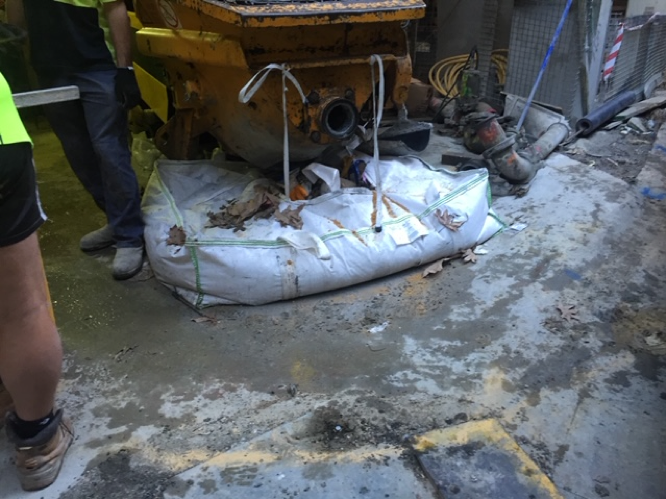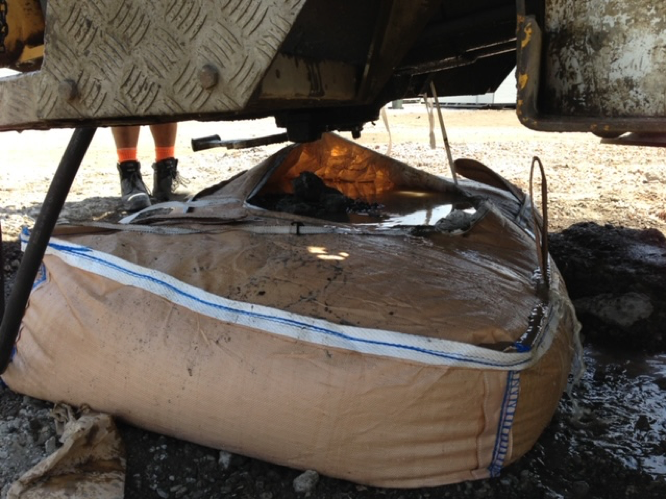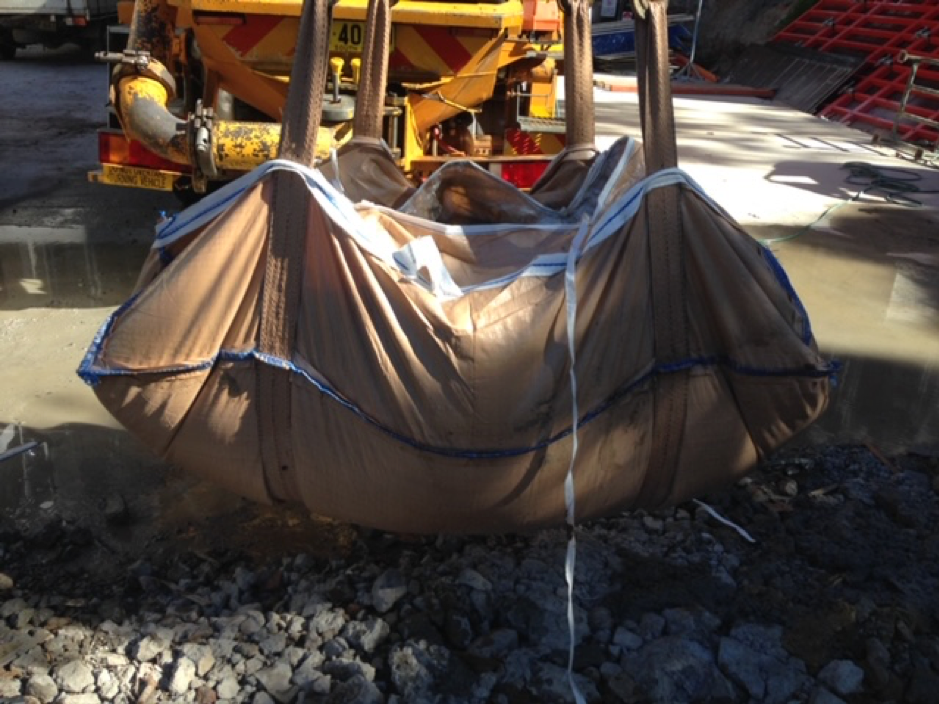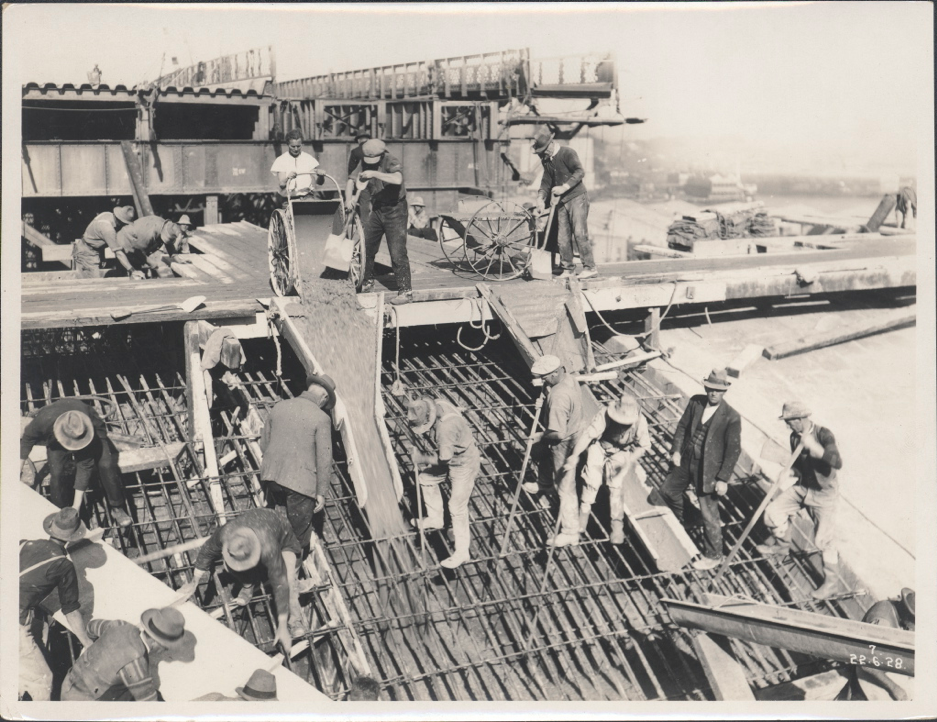The concrete washout tray is the most common concrete washout containment method used on sites. Most trays hold around .8 of a cubic metre.
Sites need to have plant equipment like a crane or manitou to move the tray around empty, and full, and to tip it into the onsite skip once used. Room for storage needs to be found and on some tight sites this could be a challenge.
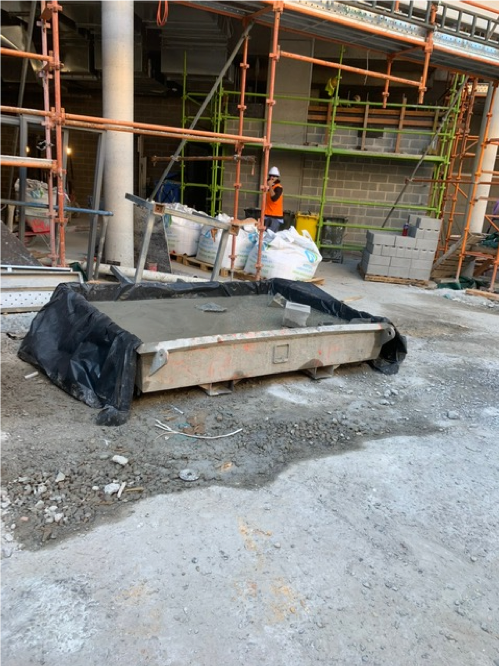
Trays can be rented or more commonly supplied by the concreter so the builder can look after the waste. All washout trays need to be lined with plastic to prevent the concrete from sticking.
So, over a large project, the amount of plastic used will add up to a considerable volume.
The plastic will contaminate the concrete to be recycled, just like the concrete wrapped in plastic from the washout bags.
For builders looking at a sustainable method of handling the concrete washout waste, this may not be the preferred method.
Washout trays just like concrete washout bags have no alternate method to contain the water overflow when full, and so often spill over the sides to the surrounding area. Like the washout bags, it can create a slip hazard when the slurry dries.
I have had builders tell me that after a couple of trays have been tipped into the skip, the water runs out of the skip onto the road when transported and are concerned about the possibility of fines from the council.
Again, with this onsite tray some builders talk about the extra or “hidden” costs that go with the handling of the trays with their equipment and the cost of the waste when the turnover of the bins is increased because of the weight in the skips.
Some of the problems we have seen:
Storage Issues: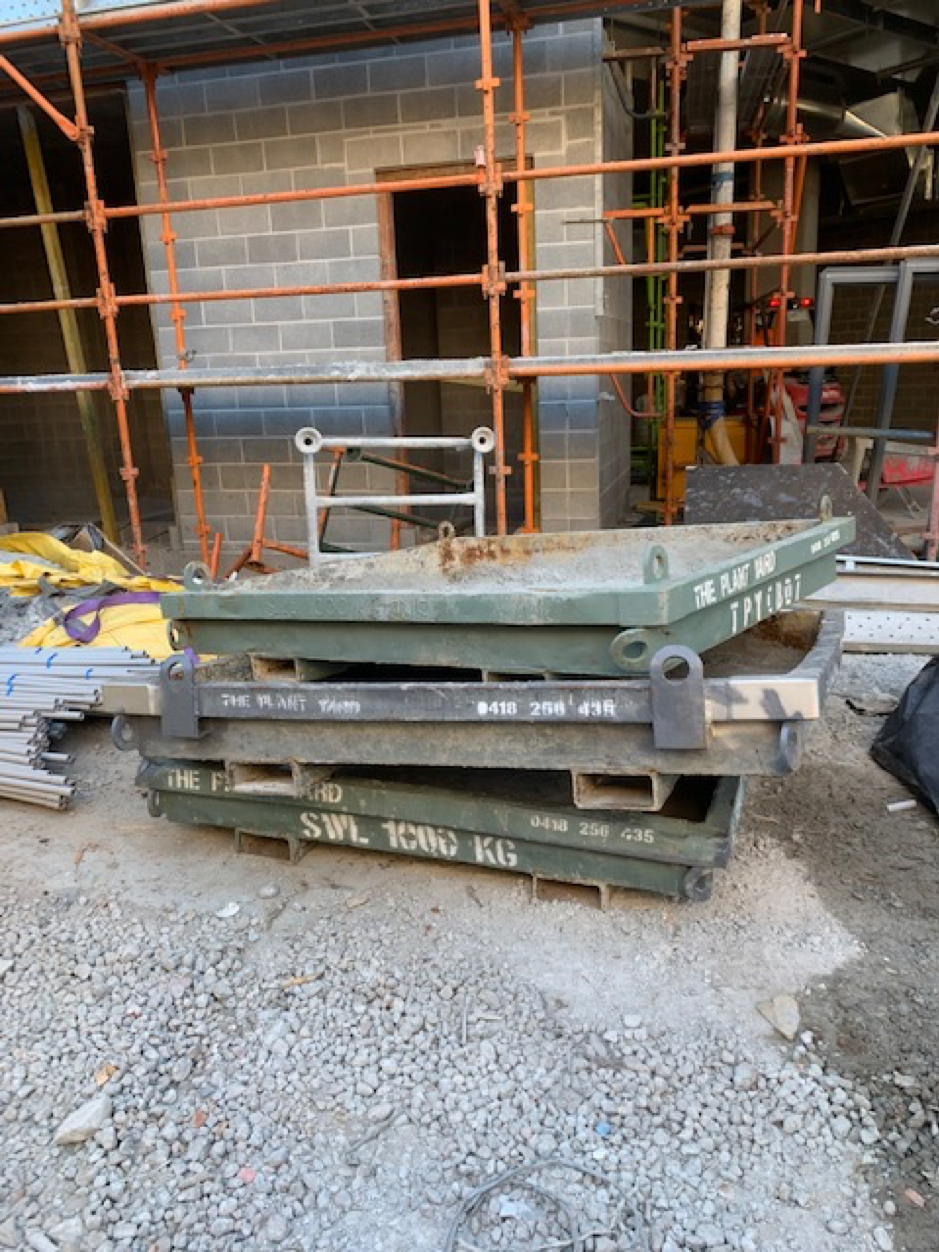
Spills: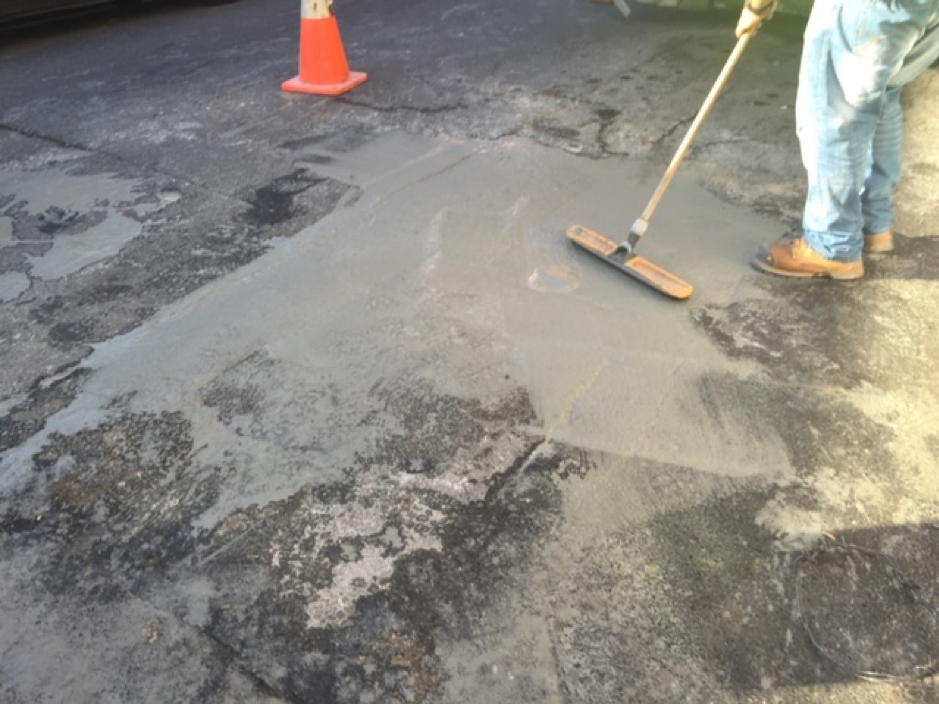
Plastic Contamination:
Has anybody seen my washout tray?
Want to know more, then get in touch

